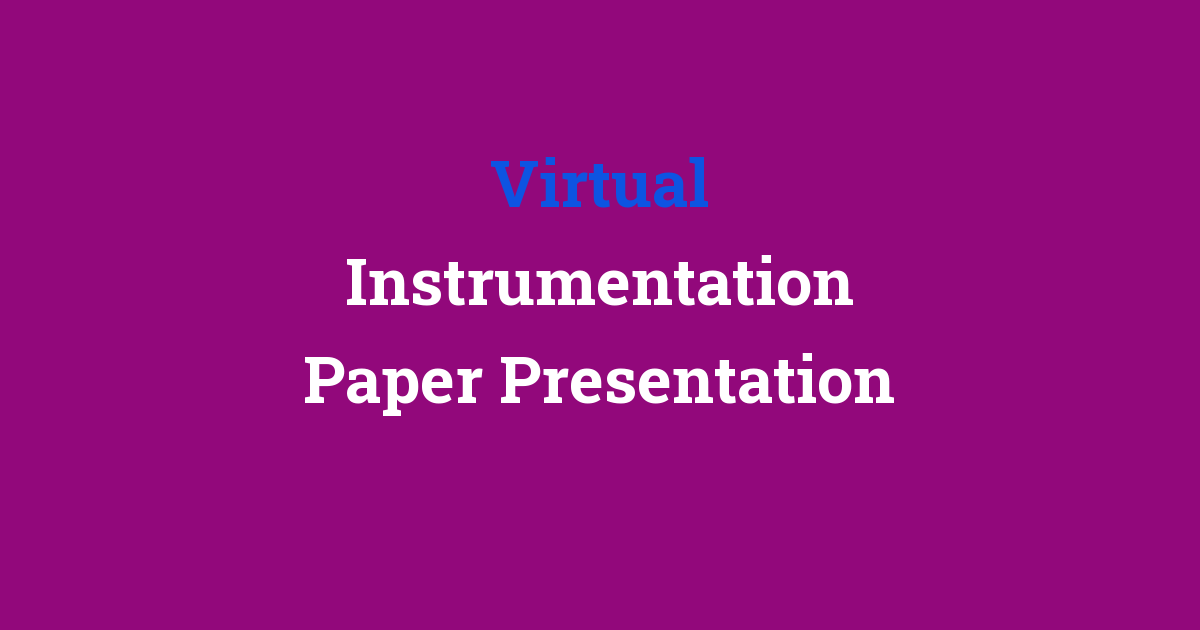Presentation on the topic of virtual instrumentation.
Virtual Instrumentation Paper Presentation
Introduction
Virtual Instrumentation is a technology used in various engineering applications to develop software-based measurement and control systems. It utilizes software programs to imitate physical instruments and interfaces with hardware devices such as data acquisition cards and sensors. This paper presentation aims to discuss the evolution of virtual instrumentation, its application in the field of engineering, and the proposed system for enhancing the current implementations.
Problem Statement
Traditional instrumentation systems rely on hardware components that are expensive, bulky, and often limited in functionality. This poses a challenge for engineers and researchers who require flexible and customizable solutions for their projects. Additionally, the lack of standardization in hardware interfaces can lead to compatibility issues and constraints in system integration.
Existing System
The existing instrumentation systems typically consist of standalone hardware devices such as oscilloscopes, signal generators, and data loggers. These devices are connected to a computer through various interfaces such as GPIB, USB, or Ethernet. While these systems have been reliable for basic measurement tasks, they lack the versatility and scalability offered by virtual instrumentation.
Disadvantages of Existing System
1. Limited Flexibility: Hardware-based systems are often rigid and difficult to customize for specific applications.
2. High Cost: Procuring multiple hardware devices can be costly for small-scale projects or research endeavors.
3. Integration Challenges: Compatibility issues between different hardware components can hinder system integration and data communication.
4. Bulky Setup: Traditional instruments occupy physical space and are not portable or easily deployable in field environments.
Proposed System
The proposed system for virtual instrumentation involves the development of software-based solutions for measurement and control tasks. By leveraging software tools such as LabVIEW, MATLAB, or Python, engineers can create custom interfaces, data visualization tools, and automation scripts for their projects. This approach offers a more cost-effective, flexible, and scalable alternative to traditional instrumentation systems.
Advantages of Proposed System
1. Customizability: Software-based systems can be tailored to specific project requirements with ease.
2. Cost-Effective: Virtual instruments eliminate the need for multiple hardware devices, reducing overall project costs.
3. Standardized Interfaces: Virtual instruments utilize common protocols such as Ethernet or USB, promoting seamless integration between different components.
4. Portability: Software tools can be deployed on laptops or mobile devices, enabling field measurements and remote monitoring capabilities.
Features of Virtual Instrumentation
Some key features of virtual instrumentation include:
– Graphical User Interface (GUI): Intuitive interfaces for data visualization and user interaction.
– Data Acquisition: Real-time data acquisition from sensors, probes, and other measurement devices.
– Data Analysis: Built-in tools for data processing, signal analysis, and statistical calculations.
– Automation: Scripting capabilities for automating measurement routines and control tasks.
– Connectivity: Support for various communication protocols such as TCP/IP, Modbus, or CAN bus.
Conclusion
In conclusion, virtual instrumentation offers a versatile and cost-effective solution for engineering applications that require measurement and control systems. By shifting from traditional hardware-based setups to software-driven platforms, engineers can enhance their productivity, flexibility, and innovation capabilities. The proposed system aims to address the limitations of existing instrumentation systems while leveraging the benefits of virtual instrumentation technology. With continuous advancements in software development and hardware integration, the future of virtual instrumentation holds great promise for the engineering community.

